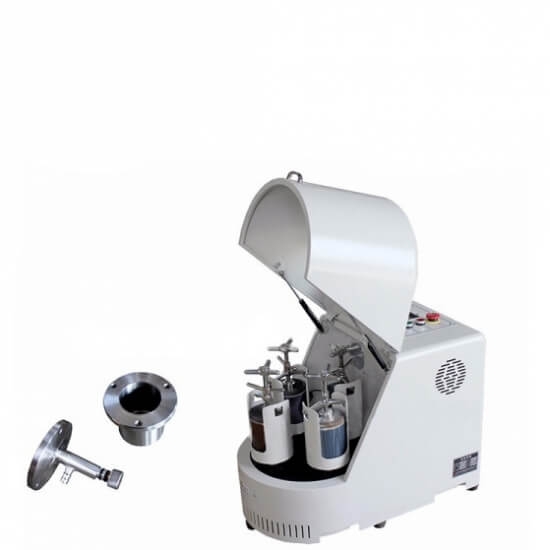

Planetary centrifugal mixer: Principles and Functions
Understanding the Core Principles:
The Vacuum Degassing Mixer operates on the principles of degassing and mixing under reduced pressure, creating an environment where gases, bubbles, and volatile components are efficiently removed from a liquid mixture. This process is crucial in various industries, ensuring the production of high-quality materials.
Key Components and Working Mechanism:
The heart of the system is the vacuum chamber, where the entire degassing process unfolds. The chamber is sealed to create a controlled environment with reduced pressure.
Planetary degassing mixer Mechanism:
Integrated mixing elements, such as blades or impellers, are responsible for homogenizing the material within the vacuum. This simultaneous mixing and degassing enhance the overall efficiency of the process.
Reduced Pressure:
By creating a vacuum within the chamber, the pressure is lowered, allowing gases and other unwanted elements to escape from the liquid material. This is particularly effective for materials with high viscosity where air entrapment is common.
Deaeration of Materials:
As the vacuum pulls gases out of the liquid, it contributes to the deaeration of the material. This is critical for industries such as pharmaceuticals, where the presence of air bubbles can compromise the quality and effectiveness of the final product.
Enhanced Homogeneity:
The combination of mixing and degassing results in a more homogeneous mixture. This is especially beneficial in industries like food processing and cosmetics, where uniformity in texture and composition is essential.
Applications Across Industries:
Chemical Industry:
The Vacuum Degassing Mixer is widely used in the chemical sector for preparing high-purity materials by removing impurities and gases.
Pharmaceuticals:
In pharmaceutical manufacturing, the equipment ensures that medications and formulations are free from air bubbles, enhancing their stability and shelf life.
Food and Beverages:
From sauces to confectionery, the mixer finds application in the food industry to achieve consistent product quality and texture.
Cosmetics:
Cosmetic formulations often require precise mixing and degassing to maintain the desired consistency and appearance.
Research and Development:
Laboratories and research facilities utilize vacuum degassing mixers to prepare accurate and reliable samples for experimentation.
Advantages of the Vacuum Degassing Mixer:
Quality Assurance:
Ensures the production of materials with minimal defects and improved overall quality.
Efficiency:
Streamlines the mixing and degassing process, reducing production time.
Customization:
Allows for the adjustment of parameters to suit the specific requirements of different materials.
Safety:
The controlled environment minimizes the risk of spills and exposure to volatile substances.
In conclusion, the Vacuum Degassing Mixer plays a pivotal role in achieving precision, quality, and efficiency in various industries where the integrity of liquid materials is paramount.
No. 5 Nanshan Road, Huli District, Xiamen City, Fujian Province, China
 Subscribe to us
Subscribe to us ONLINE
ONLINE Louis@lithmachine.com
Louis@lithmachine.com +0086 15959378975
+0086 15959378975